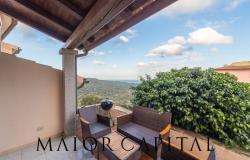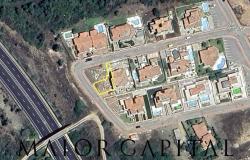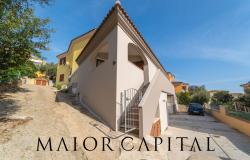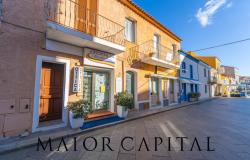http://www.lifeinitaly.it
Submitted by Ugo on Tue, 06/19/2018 - 17:07In reply to A newbie all over again! by Annec
In reply to http://www.lifeinitaly.it by Ugo
HI for us May and September
Submitted by pas55 on Wed, 06/20/2018 - 04:44In reply to A newbie all over again! by Annec
Thank you for your reply. We
Submitted by wolf on Thu, 06/21/2018 - 12:51In reply to HI for us May and September by pas55
I have been there four times,
Submitted by r€nato on Mon, 06/25/2018 - 22:38In reply to A newbie all over again! by Annec
I have been there four times, always in the northern region of the island (Gallura). I envy you. I am dying to return, I think I love it more than Tuscany and Umbria which is saying quite a lot, especially since these are the regions of my ancestors.Some random thoughts:September is a wise choice. Still fantastic weather but the Italians on holiday have mostly gone home. The sun can be so intense in July and August that the beach is too hot to walk on barefooted. In Sept. there is a slight chance you may catch some bad weather and when it happens, the rain can be torrential.You will likely want a car. Public transit - at least in Gallura - is lacking and there is SO MUCH TO SEE that you won't ever see without a car.I cannot give any advice about 4-star/5-star resorts, we always booked an apartment as part of a package deal. While there I did see a number of nice looking resorts along the northern coast of the island between Santa Teresa and Porto Cervo. So I think you could search that area and come up with something acceptable.Sardinia is well-known for roast suckling pig (porceddu). Seafood can be had as well but it's not as well-known for this. Sardinia is also well-known for pecorino cheese. In fact quite a bit of pecorino romano cheese is actually made in Sardinia. "Seadas" is a popular dessert in Sardinia, it's a ricotta-stuffed fritter coated with honey.Around Porto Cervo (center of the "Costa Smeralda" where the wealthy come to play and stay) you can get by with English; elsewhere it may be difficult because the bulk of the tourists are Italian-speaking and German-speaking. A couple of times we wandered the marina at Porto Cervo and goggled at the incredible yachts and sailboats. These boats don't belong to the 1%, these are the 0.01%!!!We bought umbrellas and lounge chairs ("ombrellone" and "sdraio") at one of the numerous shops that sell beach goods, loaded them in the car and just drove around finding beaches at random. This worked out incredibly well and I highly advise it. Much less expensive than renting each day, and far fewer people around than at the private beaches or resort-owned beaches. We found somewhat remote beaches that had stocked snack bars as well!!! If you PM me I can tell you exactly where some of these places are. Most bookstores and beachware shops also sell paperback books in English that show you where all the beaches are. It is very hard to find a bad beach in Sardinia, and the water is Caribbean crystal-clear everywhere. The only bad beach I found, there were big rocks in the water instead of sand, so it was hard to walk. Unlike most beaches on the mainland, very few of the beaches in Sardinia are private beaches owned by resorts or hotels where one has to pay for the privilege of using them.There are marvelous snorkeling opportunities in Sardinia. You may want to bring some sort of underwater-capable video camera like a GoPro or still camera. I have photos and video of octopus, all sorts of schools of fish, and even amazing colorful jellyfish.I have a few specific recommendations for restaurants that I can share via PM.There is a bookstore in Palau called "Libreria dell'Isola" and another in the main square in Santa Teresa which have an adequate selection of English language books about the beaches, culture, archaelogy, and people of Sardinia. (the one in S. Teresa is much better though as far as the selection of English-language books.)All over Sardinia there are the ruins of the Nuragic people who were a Bronze Age culture that built impressive structures using the plentiful granite. I believe some of the most interesting and vast ones are further south than Gallura. Sardinia also has a fascinating history of banditry and kidnappings of wealthy tourists, even some as recently as the 80s and 90s. It was very much a sort of "wild west" place for quite some time until modern transportation brought the island somewhat closer to the mainland.There are various 'Green Train" lines that run across Sardinia, I haven't done this but I've seen the stations from where they depart. Everyone who's done this highly recommends it. Great way to see the countryside.On the central-eastern area of Sardinia is a vast natural park and mountain range called Gennargentu, also highly recommended if you have the time.An interesting day excursion might be to take the ferry from Santa Teresa to the Corsican port town of Boniface.A particularly popular beach on the western end of Sardinia is at Stintino, and justly so. But if you go, arrive early because it's very well-known and parking is limited. If you take a drive in the area of Tempio Pausania, you can see the groves where cork is harvested from the trees.The local beer is "Ichnusa" (the Greek word for "Sardinia"), it's pretty popular there and there's a couple different varieties. Sardinia is known for "Cannonau" wine, a hearty red, and also for the liquer (sp?) "mirto" which is made from the berries that grow on bushes. I don't particularly care for mirto but the Sardi are very proud of it.Surprisingly, there's not much to see in the way of churches unlike mainland Italy. Maybe I'm wrong about that, but I don't recall spending much time at all visiting churches there.DH Lawrence wrote a short story about a visit he made in January 1921 to Sicily and Sardinia called "Sea and Sardinia". Most of it is set in Sardinia and many of the observations he made can still be recognized today.The Sardinians are an amazingly hospitable hosts, I cannot recall a single instance of encountering locals who were rude or annoyed with tourists. It's just a marvelous place with wonderful people and it has played a significant role in Italian history, particularly in the unification of Italy into a country in the mid-19th century. It's a shame that it is such a poor place, historically the Sardi have lived in desperate conditions due to the primarily agricultural nature of the economy, their history of being ruled and exploited by foreigners, and its isolation from the continent. The advent of tourism has helped to some extent but it's still a place where many young people move away to find better prospects.HTH, buon viaggio!
September is a Good choice!!,
Submitted by martinealex37 on Fri, 08/10/2018 - 12:47In reply to A newbie all over again! by Annec
September is a Good choice!!, The central-eastern area of Sardinia is a vast natural park and mountain range called Gennargentu, also highly recommended if you have the time.hope you enjoy your trip.










